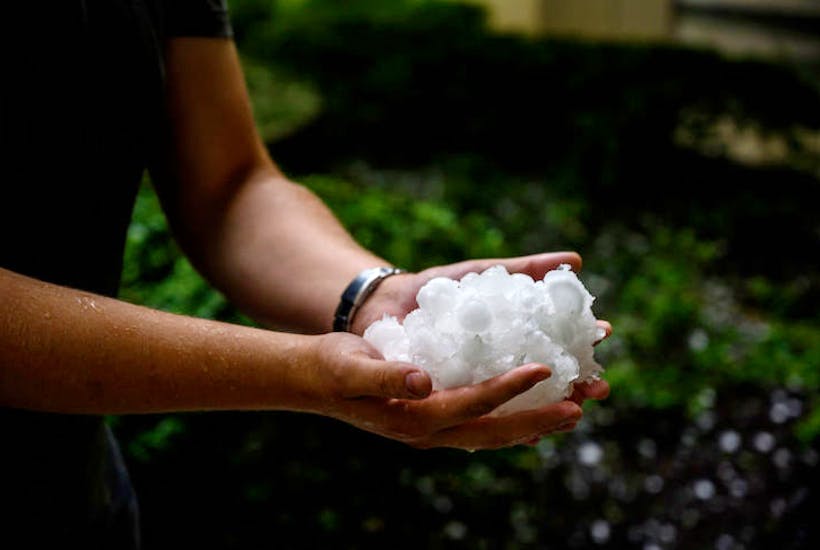It was pretty inevitable that once rain finally started to fall in South Eastern Australia, extinguishing some of the bushfires which have been raging for weeks, the wet weather, too, would be blamed on climate change. ‘Climate apocalypse starts in Australia,’ a human rights lawyer tweeted in response to golf ball sized hailstones falling in Canberra. ‘You’d be hard-pressed to look at what is going on in Australia right now and not connect it to climate change.’ said the website News & Guts, tweeting similar pictures of hailstones falling on the Australian capital. For the Weather Channel it was a case of ‘record rains’ – citing by way of example the 60mm of rain which fell in an hour in Newcastle, New South Wales.
Actually, there is nothing unusual about this week’s heavy rains in Australia. 60mm of rain an hour is a lot, but a quick look through the books reveals that the record for rainfall in an hour in New South Wales is 152mm, which fell in South Yathong on 21 September 1902 – before even David Attenborough, let alone Greta Thunberg, was born. As for hailstorms, they are a regular feature of the summer in South Eastern Australia. Neither does science seem to predict that they will become more common in future due to rising temperatures. A paper published in the International Journal of Climatology in 2005 actually predicted a fall in the frequency of hail.
Up until last week, you may remember, forecasters were warning fire-ravaged parts of the country that no significant rainfall was expected before March. And now? On Sunday, actor Russell Crowe tweeted two pictures of his estate: one taken just after it had been ravaged by fire and another after it had been revived by this week’s rains. Far from apocalypse, you could hardly tell from the latter picture that it had ever been burned.
What those erroneous forecasts teach us is that weather continues to defy anyone who attempts to predict it more than a few days ahead, even if they are equipped with impressive supercomputers and all the data in the world. Weather and climate are not the same thing, of course – one is what is happening now, the other the average of what has happened in the past 30 years. But they are similarly chaotic – which is why we should never take too seriously anyone who says that if we keep carbon emissions to x million tonnes, we will limit the rise in global temperatures by y degrees. As with the recent forecast that there would be no significant rain until March, there are bound to be factors we haven’t considered and built into climate models, and there are bound to be errors in how those models are functioning.
This is not an argument, for the benefit of those who keep trying to change my Wikipedia page to add the word ‘denier’, for dismissing the risk of climate change and failing to prepare for a range of possibilities. The inference of the above is that we could even be under-estimating temperatures in a century’s time. But it is to say that we have no real idea, and Greta’s fantastical claim at Davos that we only have eight years to save the Earth is nonsense. We should trust climatic observations; but take all predictions with a pinch of salt. The only near-certain thing is that they will be wrong.







Comments